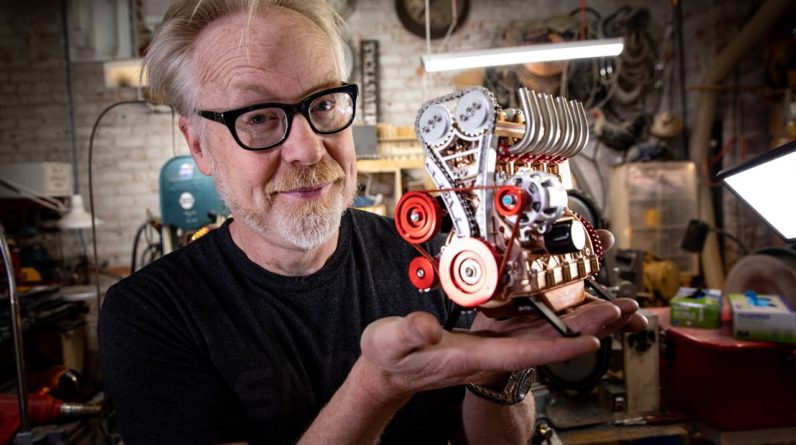Hello, my name is Angel from Hydrox Systems. Today I am going to show you our device HHO
kit model HS 4000. This kit is usually producing Oxy-hydrogen
gas, which can help you save on fuel and reducing emissions on your vehicle. So, we are going to show you a simple scheme
of how this kit is producing Oxy-hydrogen gas with a chemical abbreviation of HHO. So, there are three main components in the
HHO kit- this is the dry cell, the reservoir of the system, and the bubbler. The measure of the dry cell is 19 cm. by 19
cm, and is wide 12 cm. roughly. We will show you now a simple connection of
the system. In all our devices we are using these push-in
fittings, which are movable on 360 degrees, so during installation in a vehicle is much
easier to install it. These are the holes that are leading the electrolyte
from the reservoir to the dry cell and there is another hole, which is returning the produced
gas from the dry cell back to the reservoir.
And the next hole it is moving the gas from
the reservoir to the bubbler. The HHO bubbler is a device, which is purifying
the produced gas in the reservoir and it is taking the rough steam if there is such steam
and during usually longer operation, there is steam because it is heating up to 50 degrees. And also, the bubbler plays the role of a
flashback arrestor in case there is a spark back from the engine then. There is another hole, which is taking the
produced HHO gas from the bubbler to the engine intake, here is the connector which we are
using also as an in led connector for the gas to the vehicle intake's holes (air holes). It is supposed to be connected right after
the mass airflow sensor in the vehicle if it is possible. Now we are going to feed the system with electrolyte,
which we prepared already. You can see that the electrolyte is going
to the dry cell only by the gravity way. This system at the moment it will need like
1.5 liters of electrolyte because the dry cell is quite big – this is model HS 4000.
It has 13 plates, two of them negative, one
positive, and ten neutral plates. So, now the dry cell is filled with electrolyte
already, we can put back the cap and now we are going to connect the wires, which will
provide the power to the dry cell to start producing HHO gas. This is the negative connector on the dry
cell, tight it a little bit, so it won't lose. Now we are connecting the positive wire and now we will release the voltage. So in this case, we will simulate the charging
system of the vehicle, which is delivering 12 to 14.4 volts, increasing the power so
it will be the same like on the vehicle. It is already started to producing gas, as
you can see it is working very well, we just got 13 Amps, but in real conditions of the
vehicle just do not exceed 25 Amperes, because this will be dangerous for the charging system.
Actually, not dangerous, but it won't be effective
if you are using too much power from the vehicle. In not all cases bigger is better, so just
do not exceed 25 amps. You can see now how the kit is working, it
is producing gas. Usually, in the vehicle, we are using our
device, called Dynamic PWM, which is controlling amperes and voltage automatically. You don't have to do anything in case you
want to install also this device with your kin in your vehicle. There are two models for the Dynamic PWM – one
is for Diesel engines, the other one is for Petrol injection engines, you can choose which
one of them you might need for youр vehicle. But in another video, I will explain how the
Dynamic PWM is working. As you can see it is a very small device so
you can find a space to install it – it is quite easy. We made them digital with software, so it
works totally automatic – you don't have to do anything.

You can see how the HHO gas is produced, so
the water is going from the reservoir to the dry cell to fill it up, and then the produced
gas is going back to the reservoir, where it is separating from the water and the upper
connector. Only gas is going to the HHO bubbler, which
is bubbling here to take the rough steam from the bubbler, in case there is some steam. Because with longer hours of operation there
will be some steam because the water is vaporizing also at 20 degrees. And then the produced gas is going to the
vehicle intake.
It should be connected right after the mass
airflow sensor on the filter box, depending on the vehicle you have. You might be able to put it after the mass
airflow sensor or before the sensor. So, this is our model HHO kit, which we are
calling HS 4000 (Hydrox System 4000) usually, for a vehicle between 2.5 and 4.5 liters engine
displacement. It is quite easy to install it in your vehicle. What you need is just to find a space to mount
all these items under the hood near the engine, preferably, and you can save fuel and you
can reduce emissions dramatically when you are using such a device. The consumable which you will need to power
up this device is only an electrolyte, which is quite cheap.
Because you can prepare it from water and
Potassium Hydroxide (KOH) which is also a cheap, rough material. You can start saving fuel and reducing emissions,
also. This is very important for all of us. Okay, that is all from us for today. In the next videos we are going to show you
other systems, that we are producing also for light vehicles, 12V systems, we have also
24V systems and bigger devices as well. But for the moment we are showing you this
HS 4000. If you liked this video just hit the button
"Like" and subscribe to our channel. Thank you! For any questions, just contact us at www.hydroxsystems.com
or our FB page: https://www.facebook.com/HydroxSystems/ Thanks for watching!.






